This Week Is Antibiotic Awareness Week – Learn More About The Different Types Of Antibiotics With This

This week is Antibiotic Awareness Week – learn more about the different types of antibiotics with this graphic!
More Posts from The-sleepy-chemist and Others
My favorite thing from this year: playing with the glowstick reaction using TCPO (bis(2,4,6-trichlorophenyl) oxalate).
The glow stick contains two chemicals and a suitable dye. One of the chemicals is a diaryl oxalate (in this case TCPO, or bis(2,4,6-trichlorophenyl) oxalate), the other one is an oxidizer, usually hydrogen peroxide. By mixing the peroxide with the oxalate ester, a chemical reaction takes place, releasing energy that excites the dye, which then relaxes by releasing a photon, emitting light. The color of the emitted light depends on the structure of the dye.
Using Nile Red:
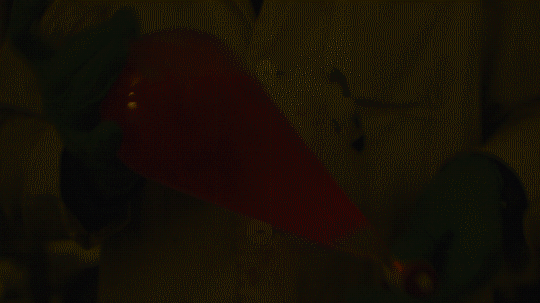
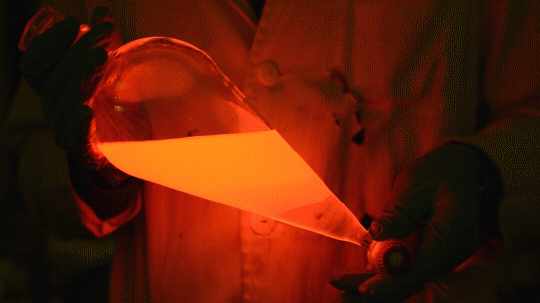
Mixing it with Perylene:

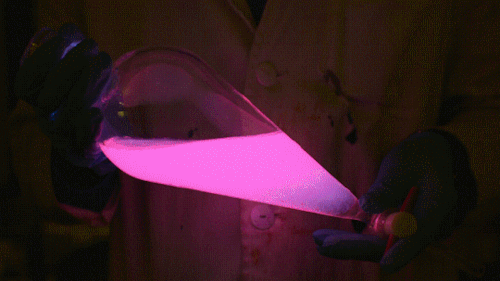
During this reaction I used two type of dyes, on of them was Nile Red, what is a quite special, solvatofluorescent dye and Perylene what is a polyaromatic hydrocarbon. When used in pure form the perylene emits a bright blue light, but when its combined with Nile Red, it emits this nice pinkish-purple as seen on the gifs above and on the video.

Maple syrup could help fight bacterial infections, Canadian scientists find
Maple syrup is once again making headlines for being the rockstar condiment that every Canadian knows it is, but it’s not the culinary world that’s buzzing this time — it’s the medical world. Newly released research from McGill University in Montreal suggests that concentrated maple syrup extract may actually help fight bacterial infections, potentially reducing the need for antibiotics around the world. “Combining maple syrup extract with common antibiotics could increase the microbes’ susceptibility, leading to lower antibiotic usage,” reads a press release issued by the university Friday. “Overuse of antibiotics fuels the emergence of drug-resistant bacteria, which has become a major public-health concern worldwide.”
Continue Reading.
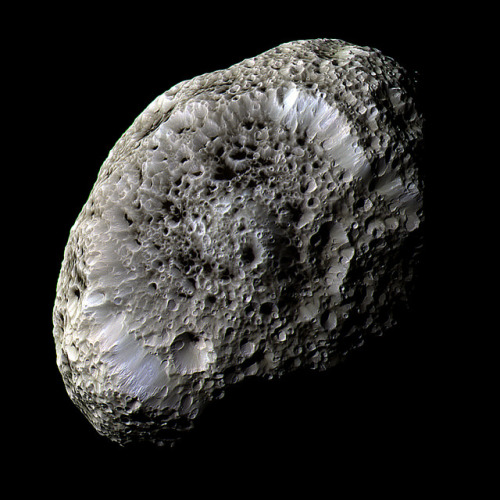
Saturn’s sponge-like moon Hyperion by europeanspaceagency on Flickr.
20 THINGS YOU SHOULD DO EVERYDAY 1. Wake up earlier. Not only does this improve productivity but it also gives you more time to make a good, hearty breakfast. 2. Make your bed. Let’s be real, being welcomed to a tidy bed after a long day at work/school (or a long day in general) is probably the best feeling anyone will ever experience. 3. If you want, spend a little more time on your appearance. Take some time choosing an outfit, applying make up or whatever. Do what helps you boost your confidence and self-esteem. 4. Stay hydrated, folks. Keep a bottle of water with you wherever you go. 5. Stretch everyday or start yoga (or do both, why not?) 6. Create a playlist consisting of songs that make you happy and listen to it. Listen to songs for the mood you want to be in, instead of the mood you are in. 7. Compliment at least one person per day. This could be an acquaintance, co-worker, class mate, stranger, whoever! 8. Use your manners. If someone holds the door for you, lets you go first etc, they did it voluntarily and didn’t have to do it, so a “thank you” wouldn’t hurt. 9. Eat your fruit and vegetables and always choose the healthy version over the junk food. 10. Have a good laugh. Catch up with friends, watch some ‘Parks and Recreation’, go see some stand-up comedy, reminisce about funny moments that have happened to you. You don’t need to be a doctor to know that humour has many benefits. 11. Be optimistic. Always look at the positives. There’s no point on focusing on the negatives because that isn’t going to help anyones mood at all. 12. Exercise. It doesn’t have to be anything to intense. A run around the block, a walk with your dog or even a ‘Just Dance’ session will do the job. 13.Bring a book/magazine or collect the daily newspaper with you. Spend you spare time reading. 14. Try and learn something new everyday. This can either be an interesting fact you saw online or a new skill someone taught you. 15. Help others when you are able to. Help your classmates with school work or offer to help you struggling neighbour lift those heavy objects. 16. Stop procrastinating. No matter how unmotivated you are to, push yourself and complete what you need to complete. Do what you gotta do. You know you’ll love yourself for doing it. 17. Drink some tea, because that stuff is goooooood (and also beneficial). 18.Make time to do things that help you relax, whether that’s painting, having baths, doing you nails or going for a run. 19. Don’t dwell on your mistakes, but instead grow and learn from them. 20. And lastly, be kind to yourself. If you love who you are, everyone else will
Chloe for Native Moon Magazine (via nativemoonmag)


Corrugated Liomera - Liomera rugata
This ultra-pinkish crab (actually magenta) is scientifically named Liomera rugata (Decapoda - Xanthidae), a species which inhabits in coral reefs of the Red Sea, Tahiti, Hawaii, Philippines, China Sea, Japan, India and French Polynesia. It is also commonly known as Corrugated Crab due to the visible granules that cover the surface of carapace.
References: [1] - [2]
Photo credit: ©Todd Aki | Locality: Hilo, Hawaii (2014)










A reminder that the inside of the cell is as beautiful as outer space.
Digital Renders by Evan Ingersoll & Gael McGill
Paintings by David Goodsell
Using the Power of Space to Fight Cancer
From cancer research to DNA sequencing, the International Space Space is proving to be an ideal platform for medical research. But new techniques in fighting cancer are not confined to research on the space station. Increasingly, artificial intelligence is helping to “read” large datasets. And for the past 15 years, these big data techniques pioneered by our Jet Propulsion Laboratory have been revolutionizing biomedical research.
Microgravity Research on Space Station
On Earth, scientists have devised several laboratory methods to mimic normal cellular behavior, but none of them work exactly the way the body does. Beginning more than 40 years ago aboard Skylab and continuing today aboard the space station, we and our partners have conducted research in the microgravity of space. In this environment, in vitro cells arrange themselves into three-dimensional groupings, or aggregates. These aggregates more closely resemble what actually occurs in the human body. Cells in microgravity also tend to clump together more easily, and they experience reduced fluid shear stress – a type of turbulence that can affect their behavior. The development of 3D structure and enhanced cell differentiation seen in microgravity may help scientists study cell behavior and cancer development in models that behave more like tissues in the human body.

In addition, using the distinctive microgravity environment aboard the station, researchers are making further advancements in cancer therapy. The process of microencapsulation was investigated aboard the space station in an effort to improve the Earth-based technology. Microencapsulation is a technique that creates tiny, liquid-filled, biodegradable micro-balloons that can serve as delivery systems for various compounds, including specific combinations of concentrated anti-tumor drugs. For decades, scientists and clinicians have looked for the best ways to deliver these micro-balloons, or microcapsules, directly to specific treatment sites within a cancer patient, a process that has the potential to revolutionize cancer treatment.

A team of scientists at Johnson Space Center used the station as a tool to advance an Earth-based microencapsulation system, known as the Microencapsulation Electrostatic Processing System-II (MEPS-II), as a way to make more effective microcapsules. The team leveraged fluid behavior in microgravity to develop a new technique for making these microcapsules that would be more effective on Earth. In space, microgravity brought together two liquids incapable of mixing on Earth (80 percent water and 20 percent oil) in such a way that spontaneously caused liquid-filled microcapsules to form as spherical, tiny, liquid-filled bubbles surrounded by a thin, semipermeable, outer membrane. After studying these microcapsules on Earth, the team was able to develop a system to make more of the space-like microcapsules on Earth and are now performing activities leading to FDA approval for use in cancer treatment.

In addition, the ISS National Laboratory managed by the Center for the Advancement of Science in Space (CASIS) has also sponsored cancer-related investigations. An example of that is an investigation conducted by the commercial company Eli Lilly that seeks to crystallize a human membrane protein involved in several types of cancer together with a compound that could serve as a drug to treat those cancers.
“So many things change in 3-D, it’s mind-blowing – when you look at the function of the cell, how they present their proteins, how they activate genes, how they interact with other cells,” said Jeanne Becker, Ph.D., a cell biologist at Nano3D Biosciences in Houston and principal investigator for a study called Cellular Biotechnology Operations Support Systems: Evaluation of Ovarian Tumor Cell Growth and Gene Expression, also known as the CBOSS-1-Ovarian study. “The variable that you are most looking at here is gravity, and you can’t really take away gravity on Earth. You have to go where gravity is reduced."
Crunching Big Data Using Space Knowledge

Our Jet Propulsion Laboratory often deals with measurements from a variety of sensors – say, cameras and mass spectrometers that are on our spacecraft. Both can be used to study a star, planet or similar target object. But it takes special software to recognize that readings from very different instruments relate to one another.
There’s a similar problem in cancer research, where readings from different biomedical tests or instruments require correlation with one another. For that to happen, data have to be standardized, and algorithms must be “taught” to know what they’re looking for.
Because space exploration and cancer research share a similar challenge in that they both must analyze large datasets to find meaning, JPL and the National Cancer Institute renewed their research partnership to continue developing methods in data science that originated in space exploration and are now supporting new cancer discoveries.
JPL’s methods are leading to the development of a single, searchable network of cancer data that researcher can work into techniques for the early diagnosis of cancer or cancer risk. In the time they’ve worked together, the two organizations’ efforts have led to the discovery of six new Food and Drug Administration-approved cancer biomarkers. These agency-approved biomarkers have been used in more than 1 million patient diagnostic tests worldwide.
Make sure to follow us on Tumblr for your regular dose of space: http://nasa.tumblr.com

Not just one, but seven Earth-size planets that could potentially harbor life have been identified orbiting a tiny star not too far away, offering the first realistic opportunity to search for signs of alien life outside of the solar system.
The planets orbit a dwarf star named Trappist-1, about 40 light years, or some 235 trillion miles, from Earth. That is quite close in cosmic terms, and by happy accident, the orientation of the orbits of the seven planets allows them to be studied in great detail.
One or more of the exoplanets in this new system could be at the right temperature to be awash in oceans of water, astronomers said, based on the distance of the planets from the dwarf star.
“This is the first time so many planets of this kind are found around the same star,” said Michael Gillon, an astronomer at the University of Liege in Belgium and the leader of an international team that has been observing Trappist-1.
Continue Reading.
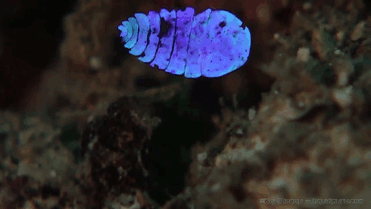
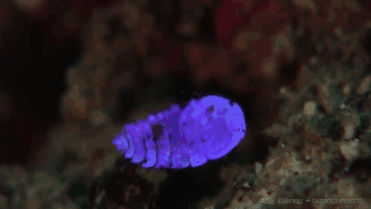
This is a Sea Sapphire! And when it doesn’t look amazing it’s invisible!
This is a type of crustacean called a copepod. It’s back is covered in guanine crystals. If it weren’t for these crystals the Sea Sapphire would be transparent, but these crystals are spaced in such a way that they strongly reflect certain colours of light. The colour of the light that’s reflected is dependent on the angle that it comes in.
Usually, it reflects blue light, but when the light hits the Sea Sapphire at 45 degrees, the reflected light shifts into the ultraviolet. And since we can’t see that it becomes invisible!
-
 freethe-phoenix liked this · 5 years ago
freethe-phoenix liked this · 5 years ago -
 day-knight reblogged this · 5 years ago
day-knight reblogged this · 5 years ago -
 day-knight liked this · 5 years ago
day-knight liked this · 5 years ago -
 inboundflight liked this · 5 years ago
inboundflight liked this · 5 years ago -
 felixdoriga liked this · 5 years ago
felixdoriga liked this · 5 years ago -
 aestheticbit-blog liked this · 6 years ago
aestheticbit-blog liked this · 6 years ago -
 rafaelvasquez reblogged this · 6 years ago
rafaelvasquez reblogged this · 6 years ago -
 cheeseburgers liked this · 6 years ago
cheeseburgers liked this · 6 years ago -
 needledred liked this · 6 years ago
needledred liked this · 6 years ago -
 thx1138pk liked this · 6 years ago
thx1138pk liked this · 6 years ago -
 m52hspringapple liked this · 6 years ago
m52hspringapple liked this · 6 years ago -
 fractal-fluctuation liked this · 6 years ago
fractal-fluctuation liked this · 6 years ago -
 amaraarzu liked this · 7 years ago
amaraarzu liked this · 7 years ago -
 nichtsichtbar94 reblogged this · 7 years ago
nichtsichtbar94 reblogged this · 7 years ago -
 h-a-zy liked this · 7 years ago
h-a-zy liked this · 7 years ago -
 space-sapphik liked this · 7 years ago
space-sapphik liked this · 7 years ago -
 amarhastalosdefectos reblogged this · 7 years ago
amarhastalosdefectos reblogged this · 7 years ago -
 amarhastalosdefectos liked this · 7 years ago
amarhastalosdefectos liked this · 7 years ago -
 katyest liked this · 7 years ago
katyest liked this · 7 years ago -
 davidgandytt liked this · 7 years ago
davidgandytt liked this · 7 years ago -
 poshdetective liked this · 7 years ago
poshdetective liked this · 7 years ago -
 tinvisibleg-blog liked this · 7 years ago
tinvisibleg-blog liked this · 7 years ago -
 trickmaster29 reblogged this · 8 years ago
trickmaster29 reblogged this · 8 years ago -
 trickmaster29 liked this · 8 years ago
trickmaster29 liked this · 8 years ago -
 justaboredmind liked this · 8 years ago
justaboredmind liked this · 8 years ago -
 screechingfoxdetective reblogged this · 8 years ago
screechingfoxdetective reblogged this · 8 years ago -
 runsquatsandcoffee reblogged this · 8 years ago
runsquatsandcoffee reblogged this · 8 years ago -
 runsquatsandcoffee liked this · 8 years ago
runsquatsandcoffee liked this · 8 years ago -
 pastel-is-my-thing liked this · 8 years ago
pastel-is-my-thing liked this · 8 years ago -
 notthingman liked this · 8 years ago
notthingman liked this · 8 years ago -
 faradyeinstein-blog reblogged this · 8 years ago
faradyeinstein-blog reblogged this · 8 years ago -
 beyondawritersmind reblogged this · 8 years ago
beyondawritersmind reblogged this · 8 years ago -
 kosmosdeslebens liked this · 8 years ago
kosmosdeslebens liked this · 8 years ago -
 wads-of-gabe liked this · 8 years ago
wads-of-gabe liked this · 8 years ago -
 mandrakebrew reblogged this · 8 years ago
mandrakebrew reblogged this · 8 years ago -
 azraelvorlost liked this · 8 years ago
azraelvorlost liked this · 8 years ago -
 spickerzocker liked this · 8 years ago
spickerzocker liked this · 8 years ago -
 imaflowerinyourhair liked this · 8 years ago
imaflowerinyourhair liked this · 8 years ago
60 posts